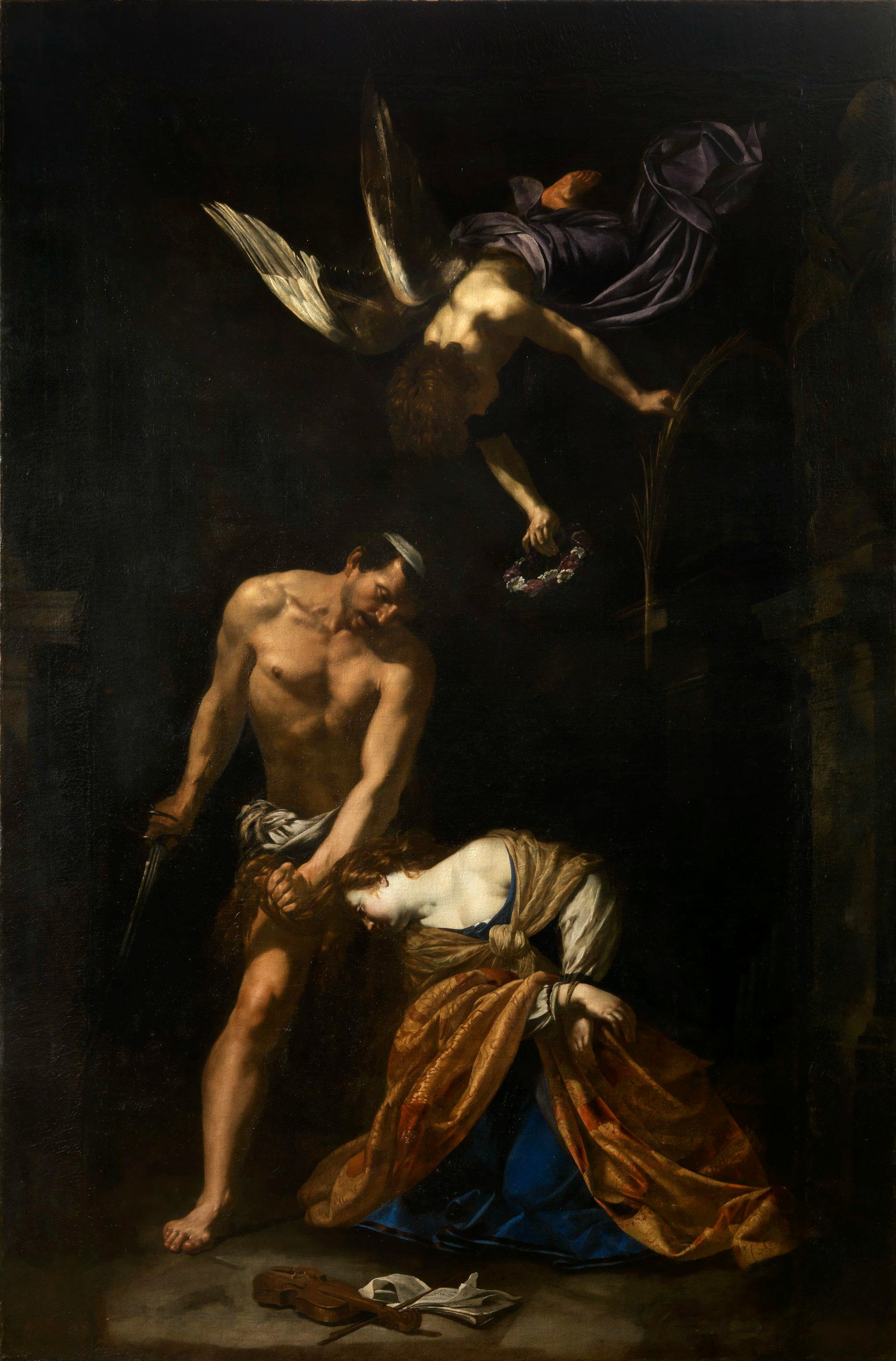Martyrdom of St. Cecilia
Orazio Riminaldi (Pisa 1593- 1630)
This work, which can be dated back to between 1620 and 1625, clearly shows how Riminaldi took inspiration from Caravaggio, even referring to some of the artist’s works, especially his “Martyrdom of St. Matthew”. The theatrical nature of the scene, the skilled orchestration of the cone of light covering the three figures, accentuates both the expressive power of the executioner, holding Saint Cecilia by the hair to uncover her neck, ready for the sword, and the dynamic movement of the angel plummeting down to the saint to honour her with the symbols of sainthood and martyrdom. Although the composition closely echoes that of Caravaggio, Riminaldi’s other elements betray a decidedly classicist influence, taken from Simon Vouet and Guido Reni, and visible in the elegant sophistication of the sumptuous brocade clothing and the tender sensuality of the saint.
The work was originally intended for the church of Santa Maria della Rotonda in the Pantheon in Rome but, for reasons perhaps linked to a partial non-payment by the church, Riminaldi kept the work and took it with him to Pisa in 1627. On his death, it passed to his heirs, who placed it in the church of Santa Caterina. In 1693 Grand Prince of Tuscany Ferdinando de' Medici bought the painting for his collection and placed it in the apartments on the first floor of Pitti Palace. It was at this time that the canvas was enlarged on three sides to fit in the imposing frame that it has today.
